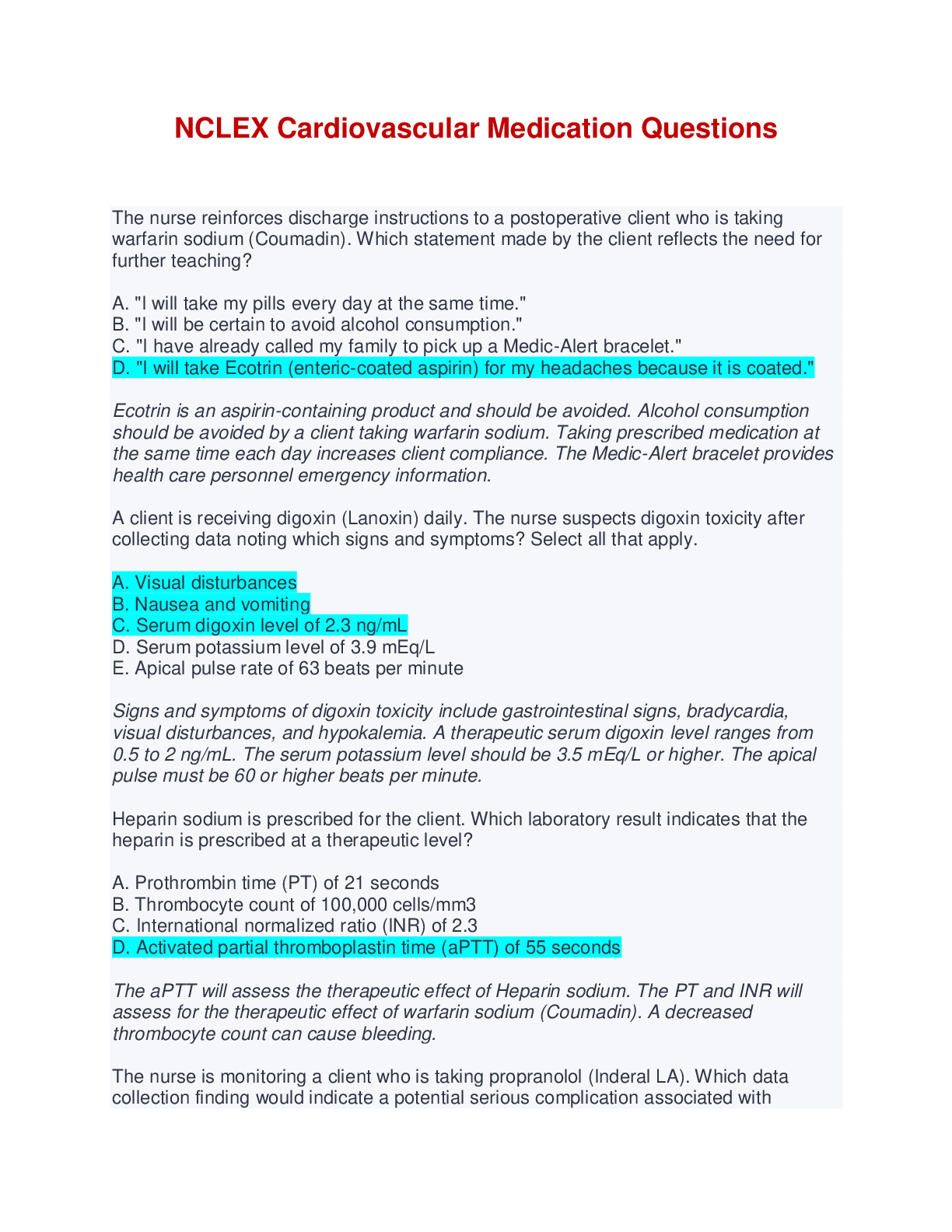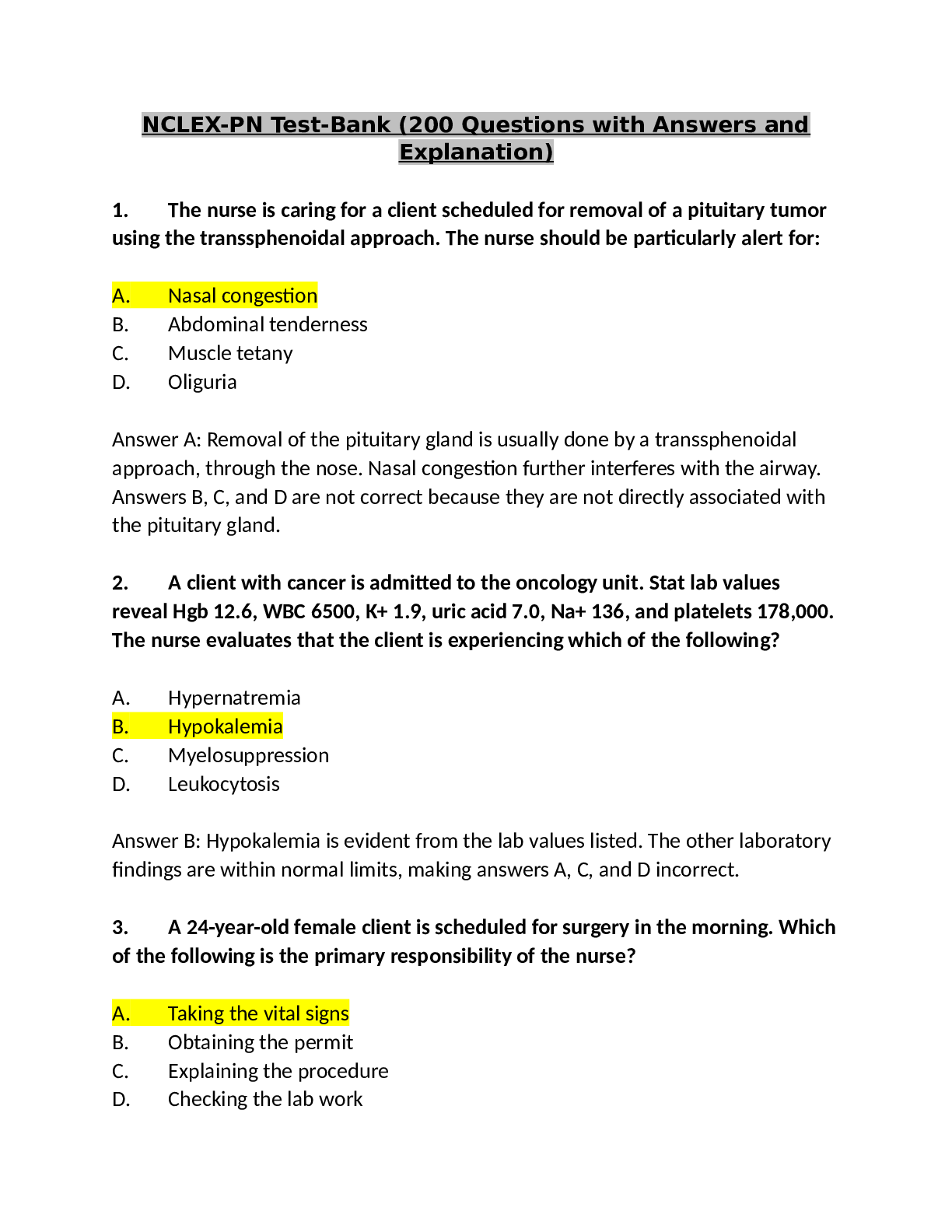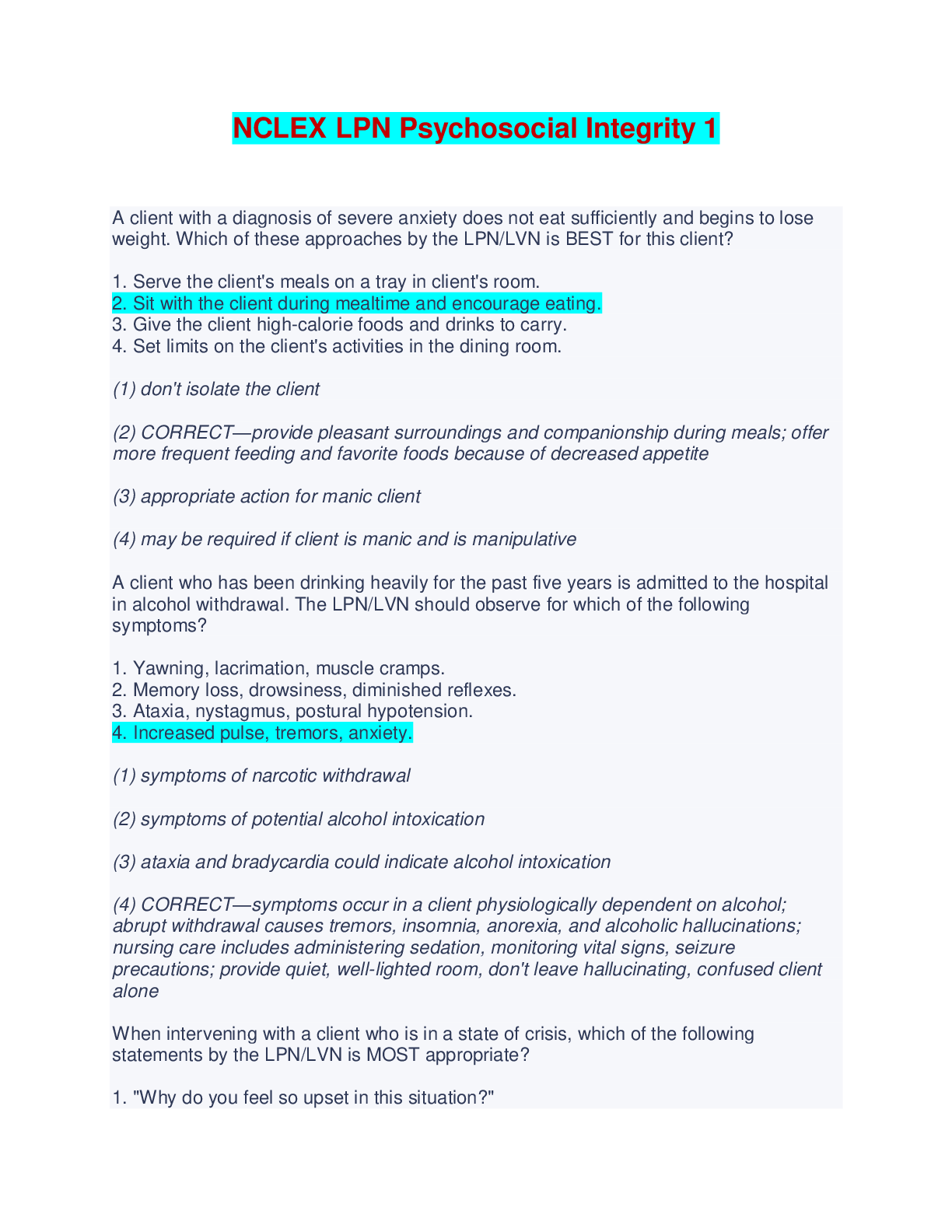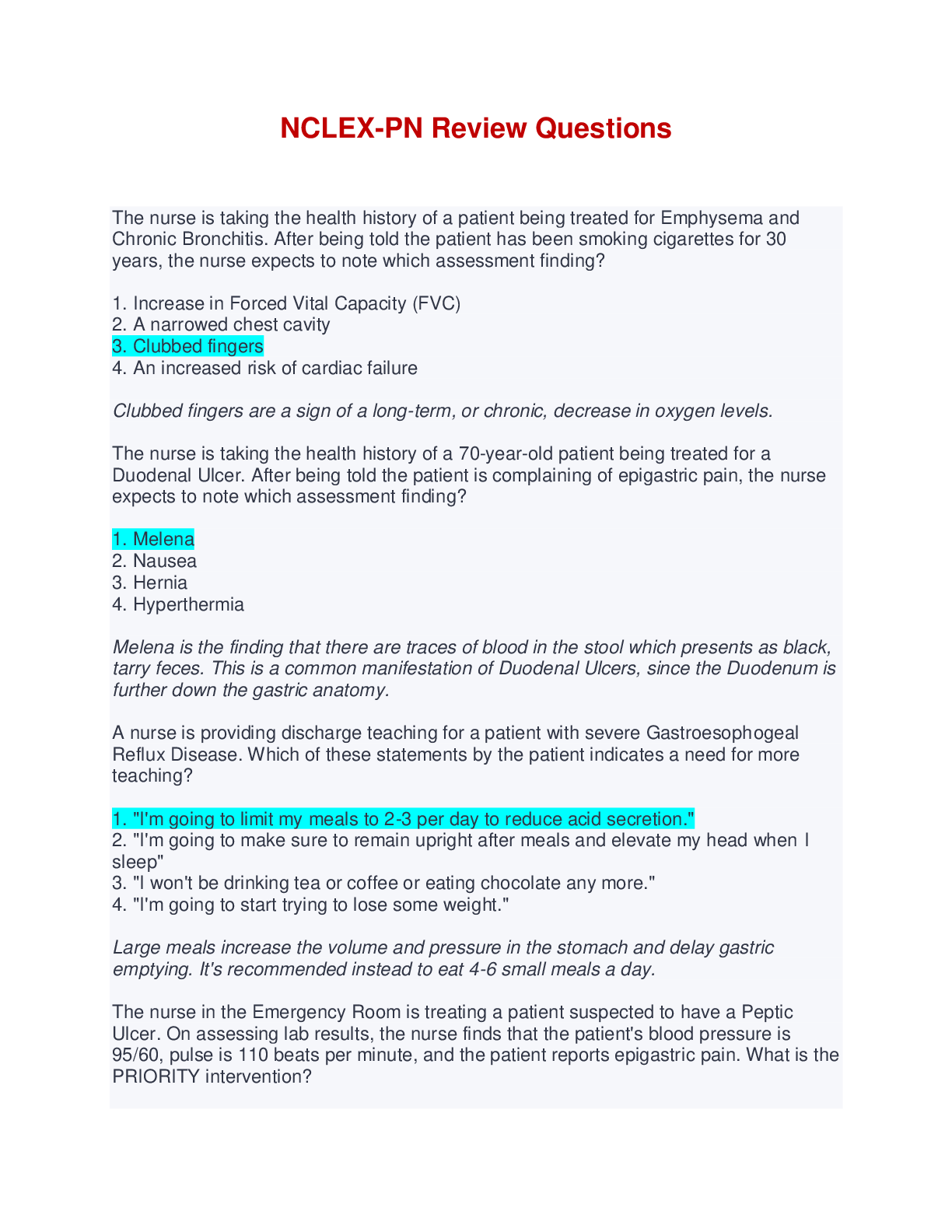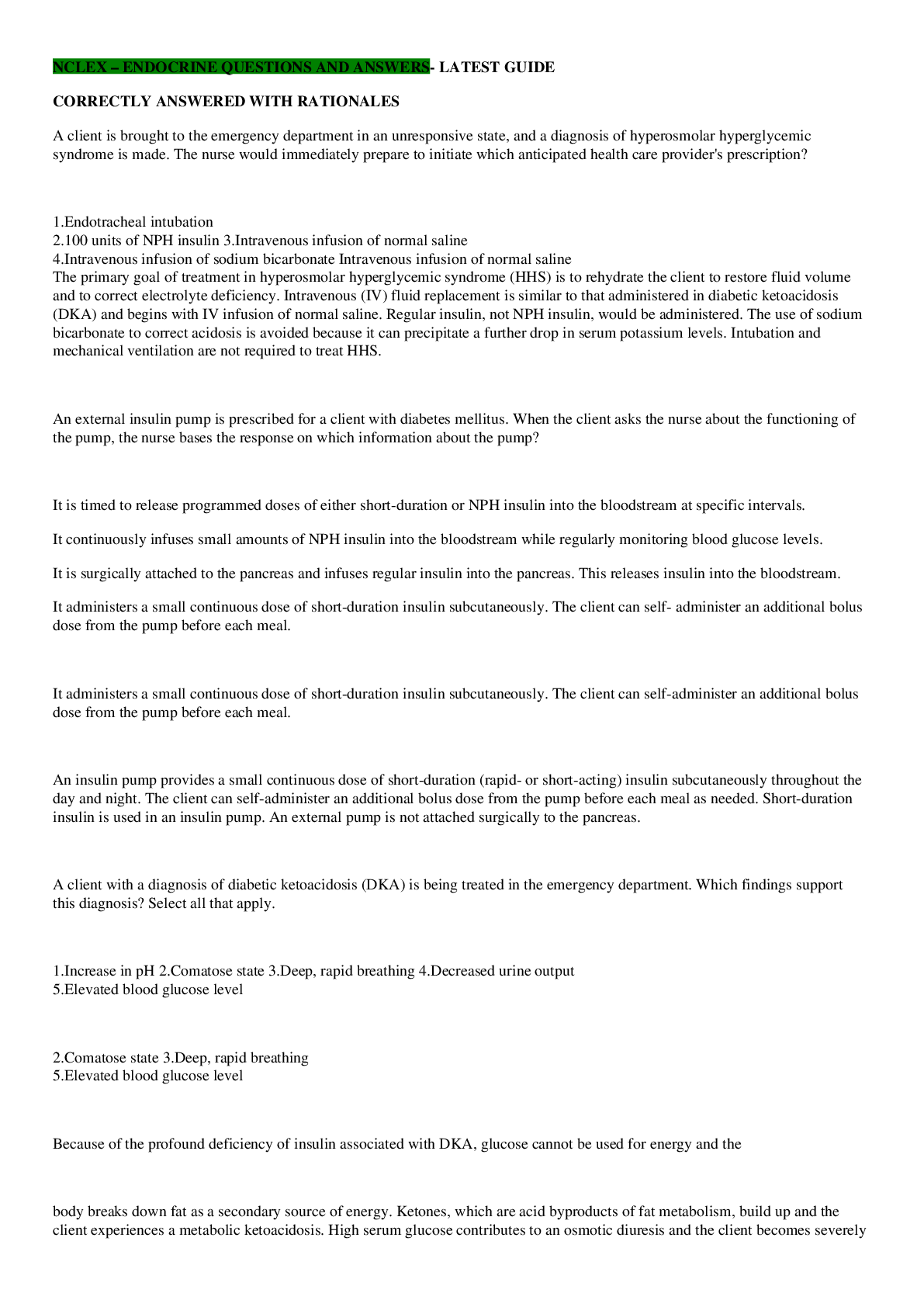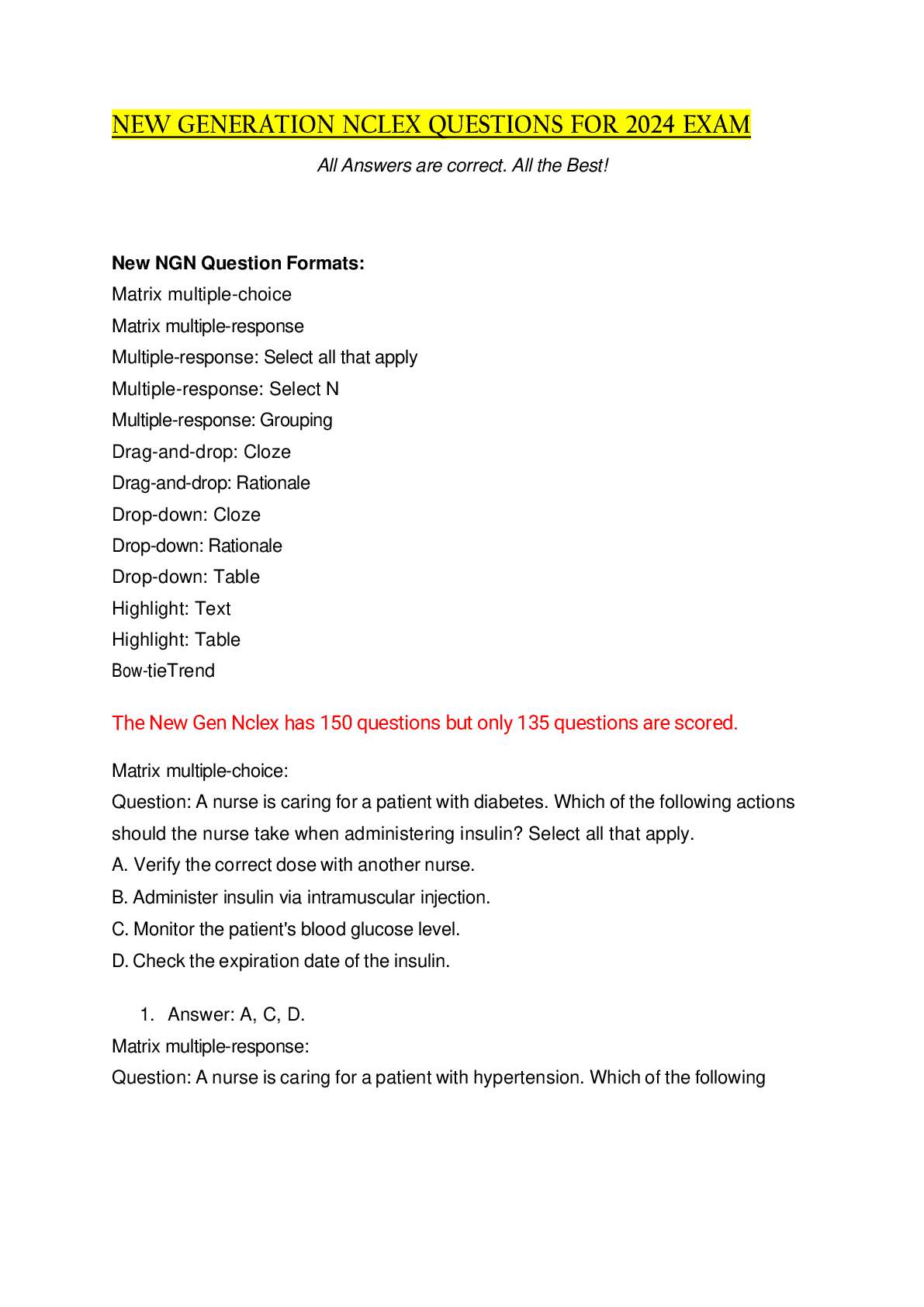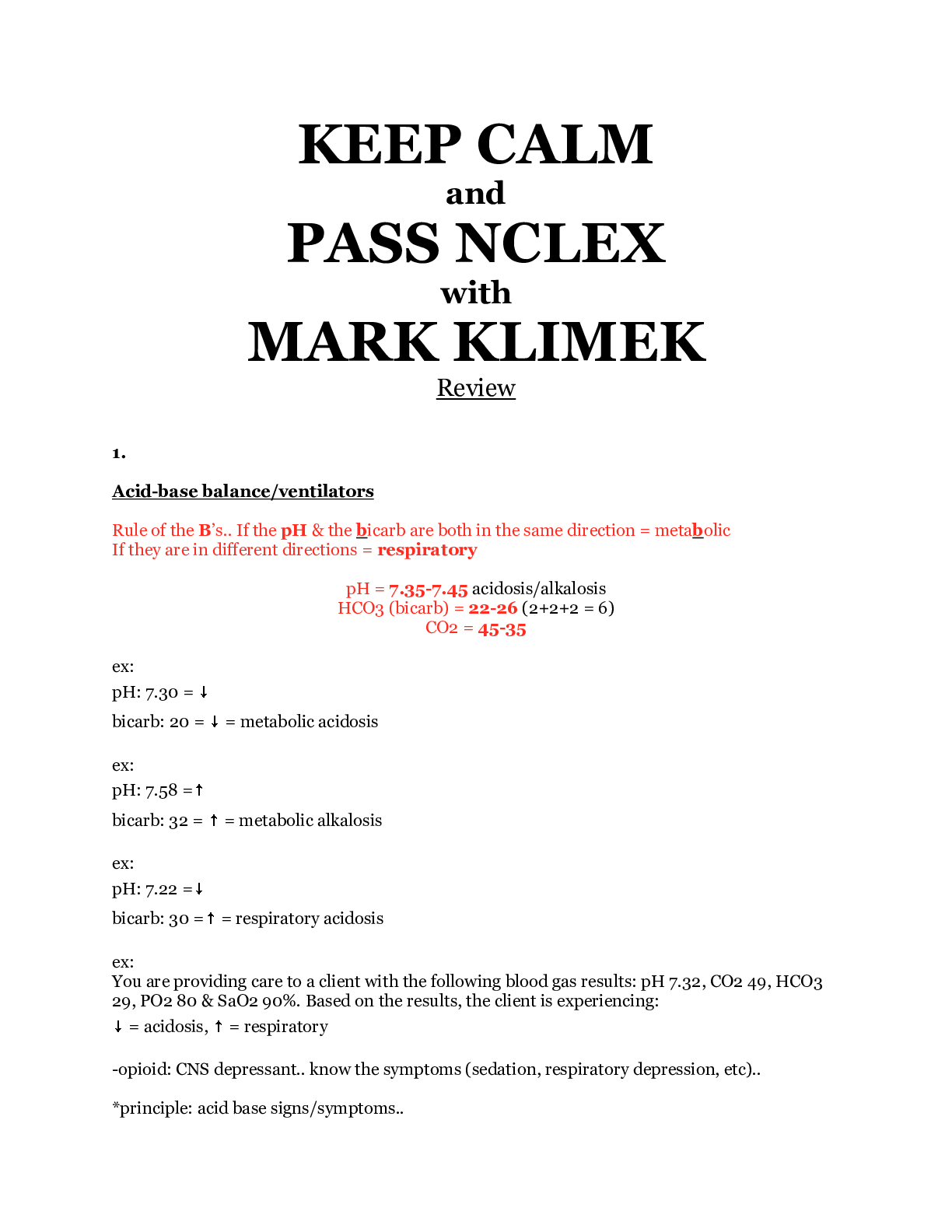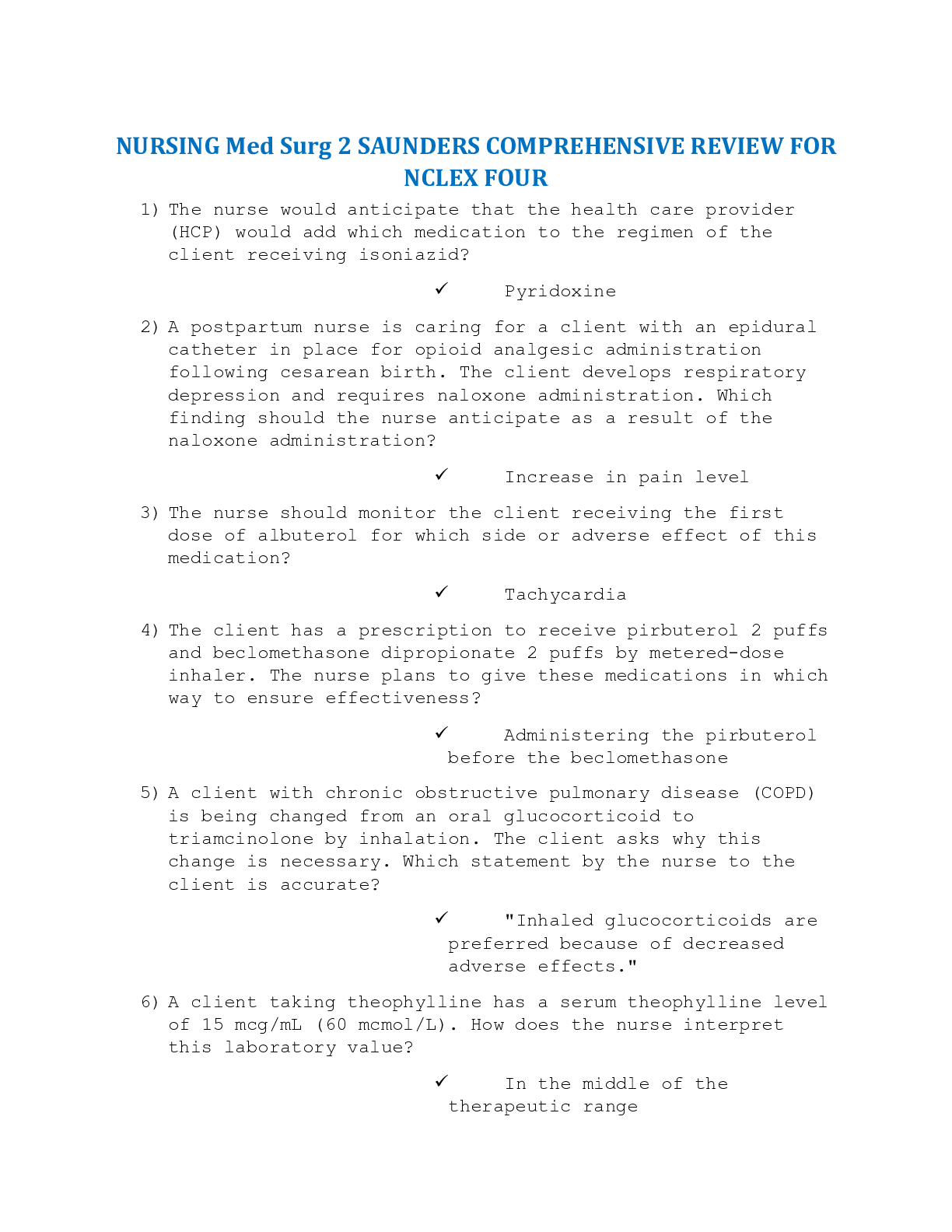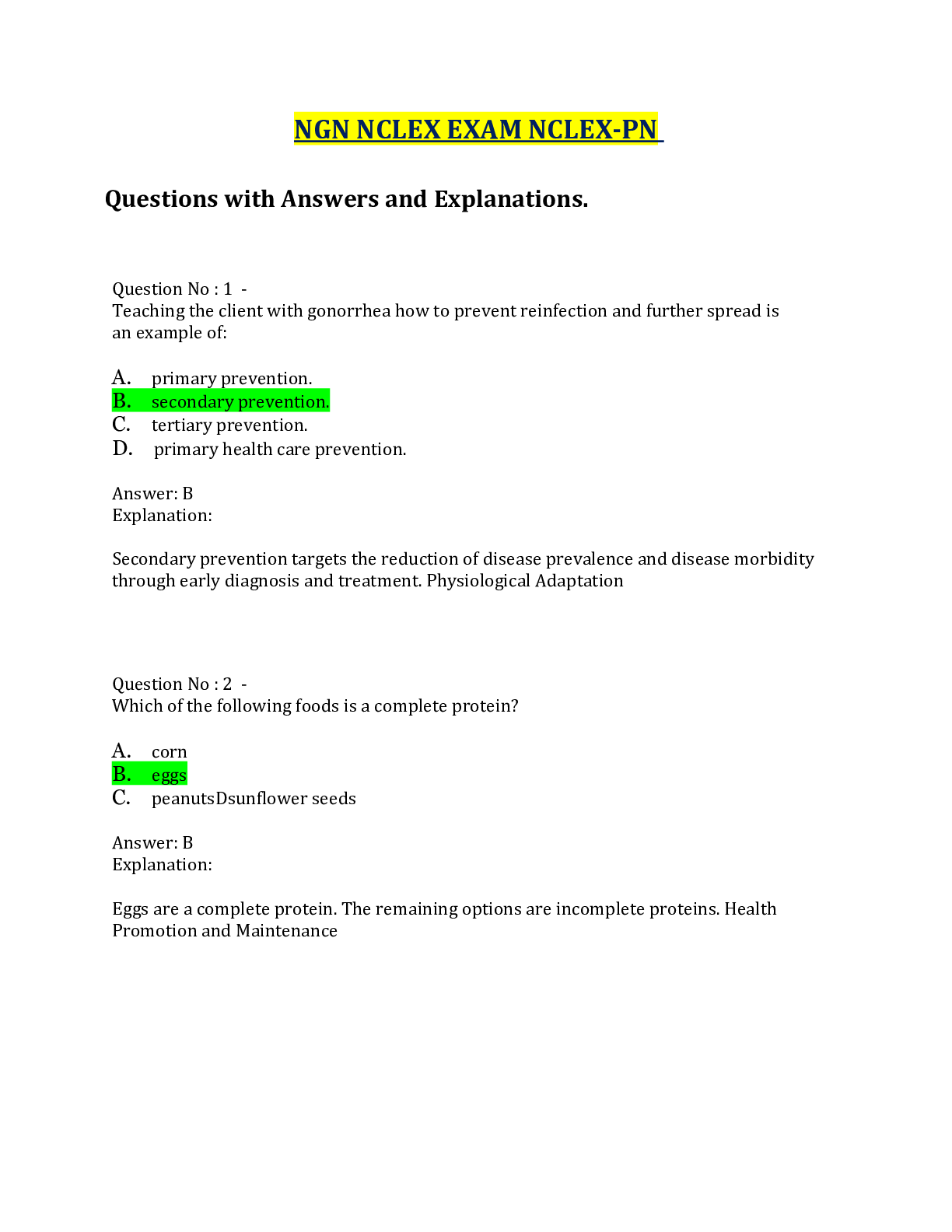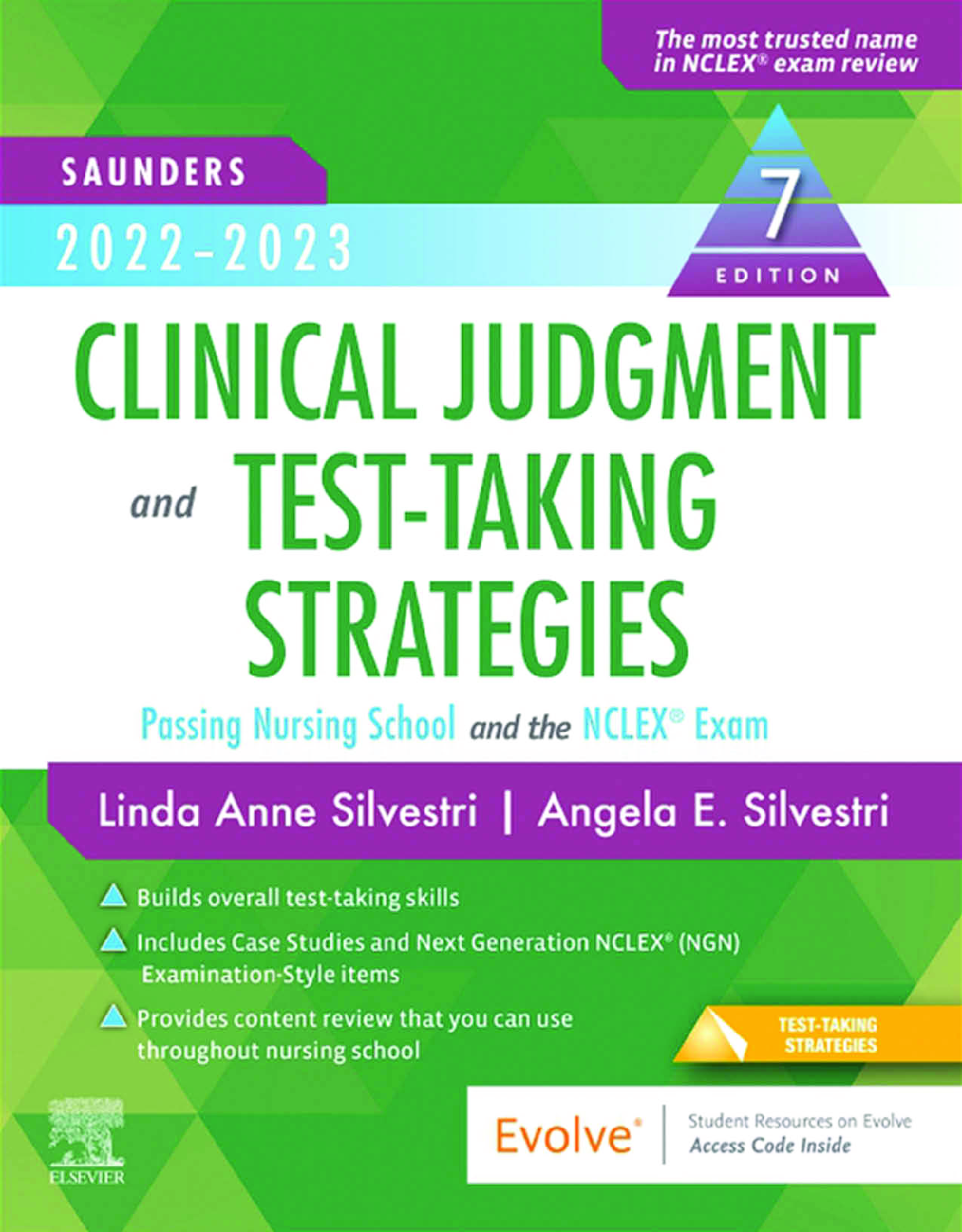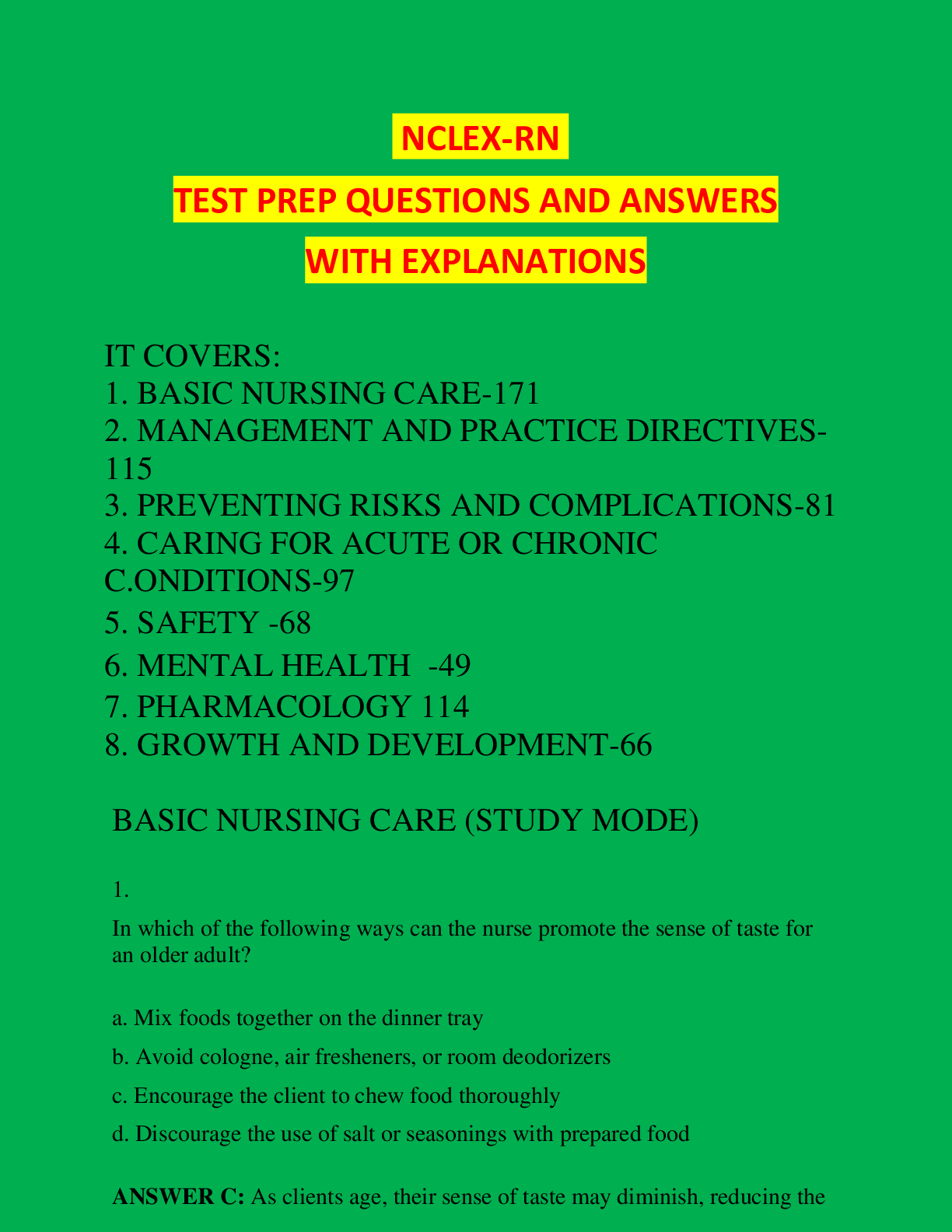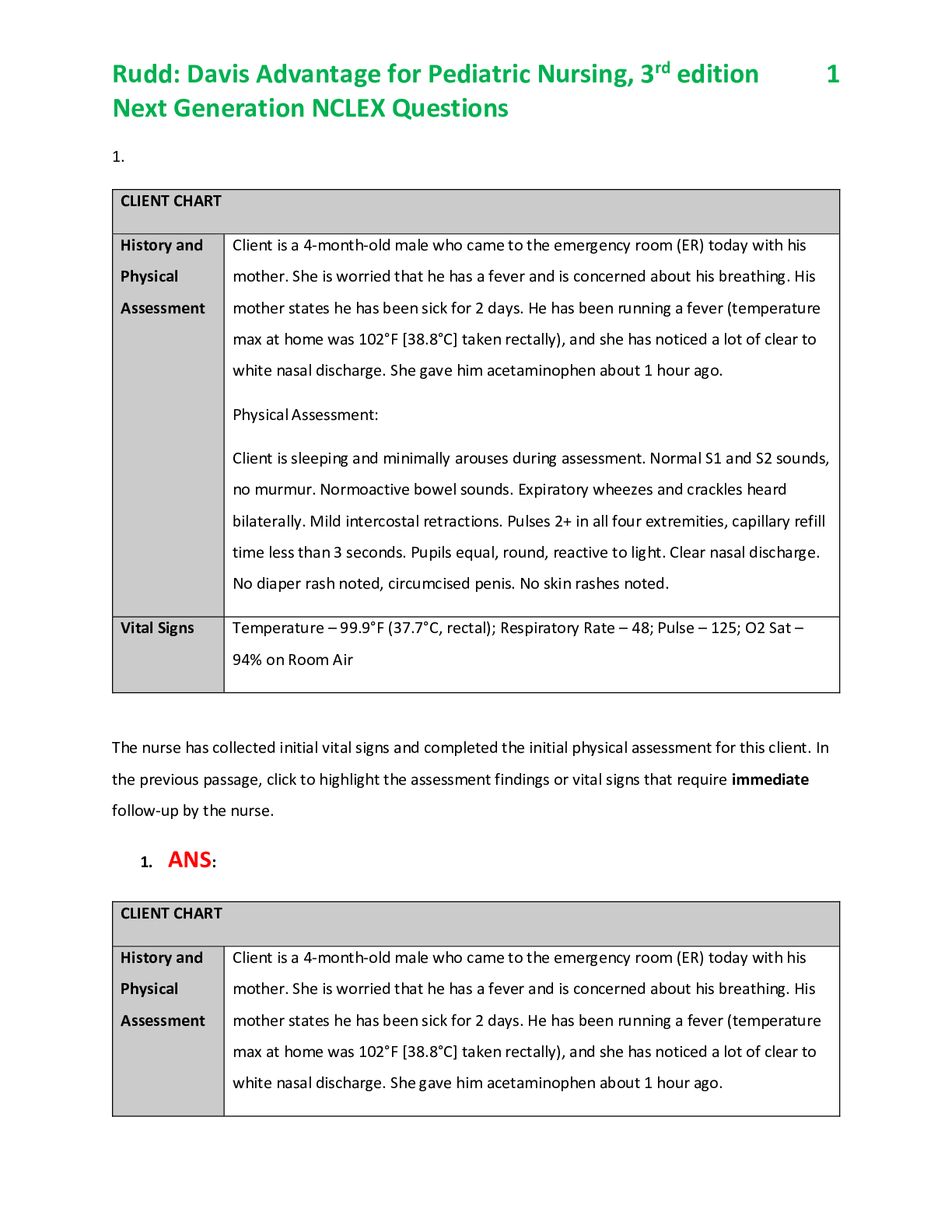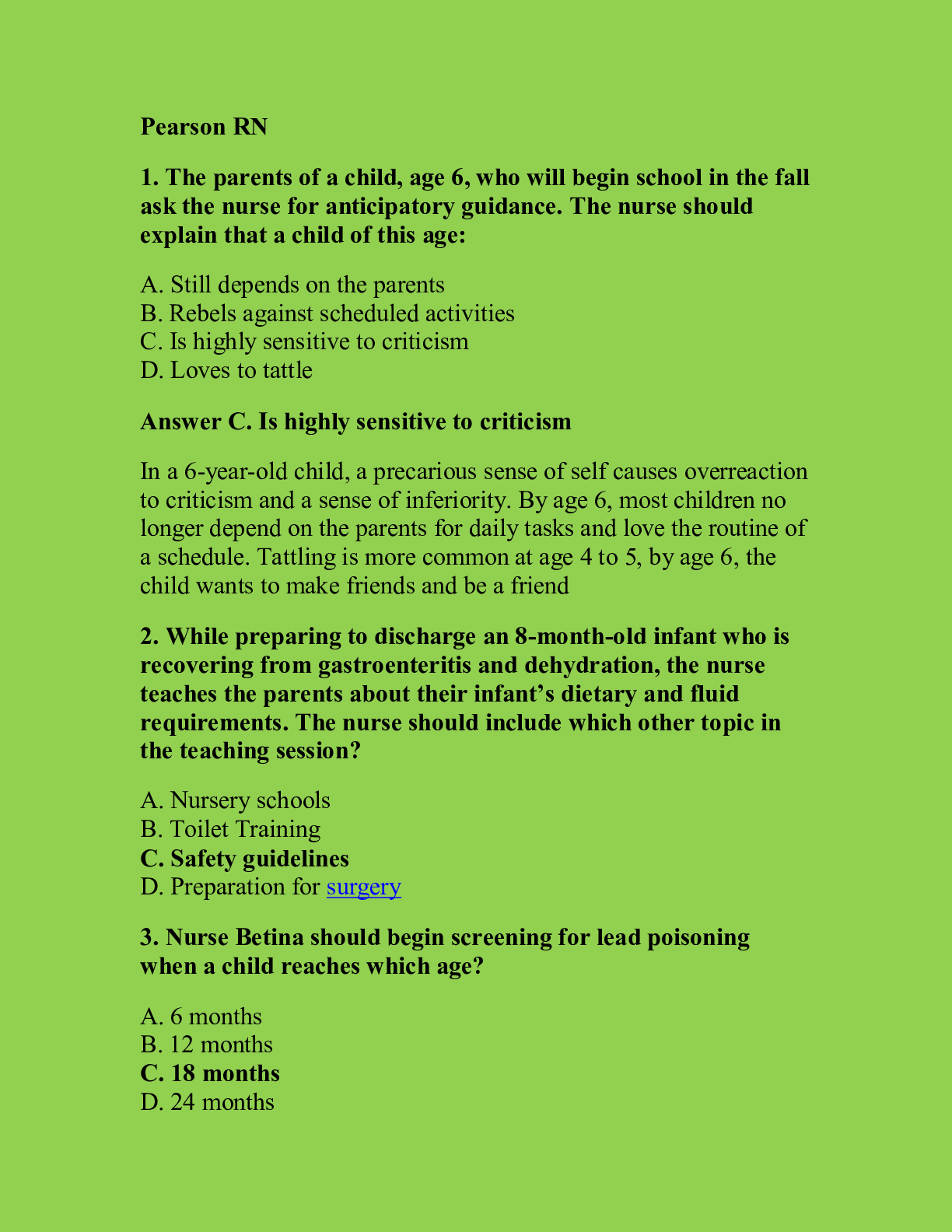Saunders NCLEX Respiratory Questions - Answered with Rationales
Document Content and Description Below
Saunders NCLEX Respiratory Questions - Answered with Rationales An emergency department nurse is performing a respiratory assessment on a client who is complaining of painful breathing. On palpation... the nurse notes a coarse grating sensation during inspiration, and on auscultation the nurse hears this breath sound. The nurse interprets these findings as characteristic of which condition? Refer to audio. 1Asthma 2Pleurisy 3Emphysema 4Pulmonary edema Rationale: The sound that the nurse hears is a pleural friction rub. A pleural friction rub is the result of pleural inflammation, often associated with pleurisy, pneumonia, or pleural infarction. It is a superficial, low-pitched, coarse rubbing or grating sound that sounds like two rough surfaces rubbing together. A pleural friction rub is heard throughout inspiration and expiration and is loudest over the lower anterolateral surface. It is not cleared by a cough. Disorders that cause airflow obstruction, such as emphysema or asthma, would produce high- or low-pitched wheezes (musical sounds similar to a squeak). Crackles occur with the sudden opening of small airways that contain fluid, usually are heard during inspiration, and do not clear with a cough. Crackles resemble the sound of a lock of hair being rubbed between the thumb and forefinger and are heard in conditions such as pulmonary edema. The nurse is auscultating breath sounds in a hospitalized client with emphysema and hears these sounds. The nurse would document this finding as which sound? Refer to audio. 1Crackles 2High-pitched wheezes 3Bronchial breath sounds 4Bronchovesicular breath sounds Rationale: The sounds that the nurse hears are high-pitched wheezes. These are musical sounds that predominate in expiration but may occur in both expiration and inspiration. They occur in the small airways and are heard in narrowed-airway diseases such as asthma or emphysema. Crackles resemble the sound of a lock of hair being rubbed between the thumb and forefinger. Crackles occur with the sudden opening of small airways that contain fluid, usually are heard during inspiration, and do not clear with a cough. Crackles are heard in conditions such as congestive heart failure or pulmonary edema. Bronchial breath sounds are loud, high-pitched sounds that resemble air blowing through a hollow pipe. Bronchial breath sounds normally are heard only over the trachea and immediately above the manubrium. Bronchial breath sounds are abnormal anywhere over the posterior or lateral chest. When they are heard in these areas, they indicate abnormal sound transmission. The nurse is caring for a client who is anxious and is experiencing dyspnea and restlessness from hypoxemia associated with pulmonary edema. Auscultation of the lungs reveals these breath sounds. The nurse determines that these breath sounds are usually caused by which condition? Refer to audio. 1Obstruction of the bronchus 2Inflammation of the pleural surfaces 3Passage of air through a narrowed airway 4Opening of small airways that contain fluid Rationale: The sounds that the nurse hears are high-pitched crackles. Crackles are audible when there is a sudden opening of small airways that contain fluid, are usually heard during inspiration, and do not clear with a cough. Crackles resemble the sound of a lock of hair being rubbed between the thumb and forefinger and are heard in conditions such as pulmonary edema. High-pitched crackles are characteristically fine and are high-pitched, discontinuous popping noises (nonmusical sounds) heard during the end of inspiration. Medium-pitched crackles produce a moist sound about halfway through inspiration. Coarse crackles are low-pitched bubbling sounds that start early in inspiration and extend into the first part of expiration. Rhonchi (low-pitched, coarse, loud, low-snoring, or moaning sounds) are heard in conditions causing obstruction of the bronchus or trachea. The nurse is providing instructions to a client with chronic obstructive pulmonary disease about using an incentive spirometer. The nurse tells the client to sustain the inhaled breath for 3 seconds. What statement by the client indicates successful teaching? 1"It will open up the major airways." 2"It will keep the small airways open." 3"It will increase lubrication for the lungs." 4"The lungs can better rid themselves of secretions." Rationale: Sustained inhalation helps maintain inflation of terminal bronchioles and alveoli, thereby promoting better gas exchange. Routine use of devices such an incentive spirometer can help prevent atelectasis and pneumonia in clients at risk. The remaining options are not reasons for sustaining inflation. The nurse is doing volunteer work in a homeless shelter. The nurse would monitor the individuals for which initial signs and symptoms of tuberculosis? Select all that apply. 1Fatigue 2Lethargy 3Chest pain 4Morning cough 5Low-grade fever 6Labored breathing Rationale: The symptoms of tuberculosis include a slight morning cough, fatigue, lethargy, and low-grade fever. The other symptoms listed are advanced (not initial) signs and symptoms. The nurse is providing preoperative teaching to the client about the use of an incentive spirometer in the postoperative period. Which instructions would the nurse include? Select all that apply. 1Sit upright in the bed or in a chair. 2Inhale as deeply and quickly as possible. 3Hold the device in a downward position. 4Place the mouthpiece in your mouth and seal your lips tightly around it. 5After maximum inspiration, hold the breath for 2 to 3 seconds and exhale. Rationale: For optimal lung expansion with an incentive spirometer, the client would assume a semi-Fowler's or high-Fowler's position while holding the incentive spirometer in an upright position. The mouthpiece needs to be covered completely with the lips while the client inhales slowly, with a constant flow through the unit. The breath needs to be held for 2 to 3 seconds before exhaling slowly. The nurse is discussing the techniques of chest physiotherapy and postural drainage (respiratory treatments) to a client having expectoration problems because of chronic thick, tenacious mucus production in the lower airway. The nurse explains that after the client is positioned for postural drainage, the nurse will perform which action to help loosen secretions? 1Palpation and clubbing 2Percussion and vibration 3Hyperoxygenation and suctioning 4Administer a bronchodilator and monitor peak flow Rationale: Chest physiotherapy of percussion and vibration helps to loosen secretions in the smaller lower airways. Postural drainage positions the client so that gravity can help mucus move from smaller airways to larger ones to support expectoration of the mucus. Options 1, 3, and 4 are not actions that will loosen secretions. The nurse is providing education to a client diagnosed with acute laryngitis. Which client statement indicates a need for further teaching? 1"I would only whisper to talk." 2"I will run my humidifier at home." 3"I can take acetaminophen as needed for pain." 4"I will drink more fluids and will avoid caffeine and alcohol." [Show More]
Last updated: 6 months ago
Preview 1 out of 22 pages
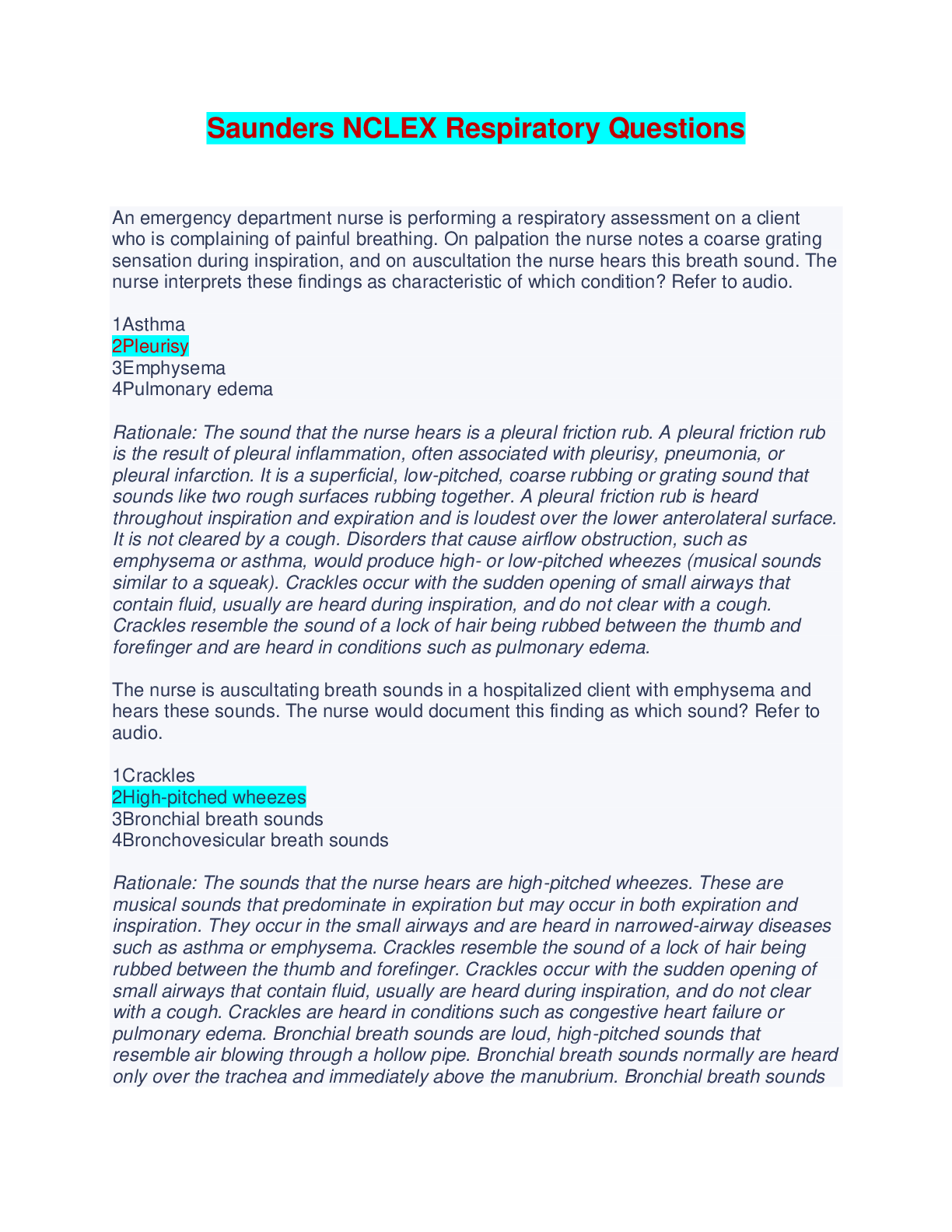
Reviews( 0 )
Document information
Connected school, study & course
About the document
Uploaded On
Nov 21, 2023
Number of pages
22
Written in
Additional information
This document has been written for:
Uploaded
Nov 21, 2023
Downloads
0
Views
38


